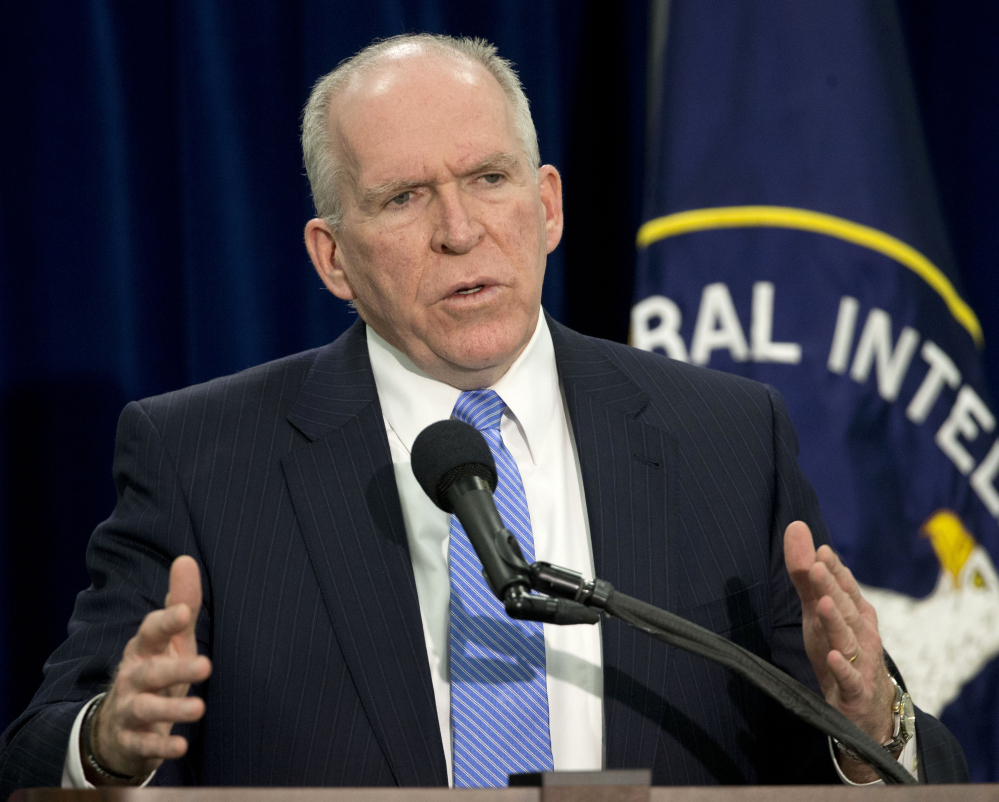WASHINGTON — The CIA embarked on a sweeping restructuring Friday that will bring an end to divisions that have been in place for decades, create 10 new centers that team analysts with operators, and significantly expand the agency’s focus on digital espionage.
The plans were unveiled by CIA Director John Brennan to a workforce in which thousands of employees are likely to see changes in which departments they work for, the lines of authority they report to and even where they sit.
The overhaul is designed to foster deeper collaboration and an intensified focus on a range of security issues and threats, replacing long-standing divisions that cover the Middle East, Africa and other regions with hybrid “mission centers” modeled on the CIA’s Counterterrorism Center.
The CIA will also create a new directorate focused exclusively on exploiting advances in computer technology and communications. The Directorate of Digital Innovation will rank alongside the agency’s operations and analysis branches, and be responsible for missions ranging from cyber-espionage to the security of the CIA’s internal email.
In a briefing with reporters, Brennan described the far-reaching changes as “part of the natural evolution of an intelligence agency” that has not seen a significant reorganization in decades.
A central aim, he said, is to eliminate “seams” in coverage that lead to confusion over which part of the agency is responsible for tracking a specific issue or threat. After the reorganization, Brennan said, the CIA should be in position to “cover the entire universe, regionally and functionally, and so something that’s going on in the world falls into one of those buckets.”
CIA veterans and experts described the restructuring as among the most ambitious since the agency was founded in 1947.
“This is a major reorganization, one of the largest and most fundamental they’ve had,” said Mark Lowenthal, a former senior CIA officer and an expert on the history of the U.S. intelligence community. Lowenthal also expressed concern that replicating the Counterterrorism Center may also mean replicating an approach criticized at times for being too driven by short-term objectives such as finding the next target for a drone strike.
“Where in this does John have what I would think of as his intellectual strategic reserve, people not worried about day-to-day stuff but who think about what is going to happen two years out?” Lowenthal said. “The centers tend not to do that. They tend to answer today’s mail.”
But Brennan defended the reforms as critical to the agency’s viability in an era of technological and social upheaval. At one point he compared the initiatives to an effort to avoid the fate of Kodak, the company that failed to foresee the impact of digital technology on its film franchise. “Things just passed them by,” Brennan said.
As part of Brennan’s plan, longstanding divisions focused on Africa, the Middle East and other regions will give way to centers of corresponding geographic boundaries.
Copy the Story LinkSend questions/comments to the editors.



Success. Please wait for the page to reload. If the page does not reload within 5 seconds, please refresh the page.
Enter your email and password to access comments.
Hi, to comment on stories you must . This profile is in addition to your subscription and website login.
Already have a commenting profile? .
Invalid username/password.
Please check your email to confirm and complete your registration.
Only subscribers are eligible to post comments. Please subscribe or login first for digital access. Here’s why.
Use the form below to reset your password. When you've submitted your account email, we will send an email with a reset code.